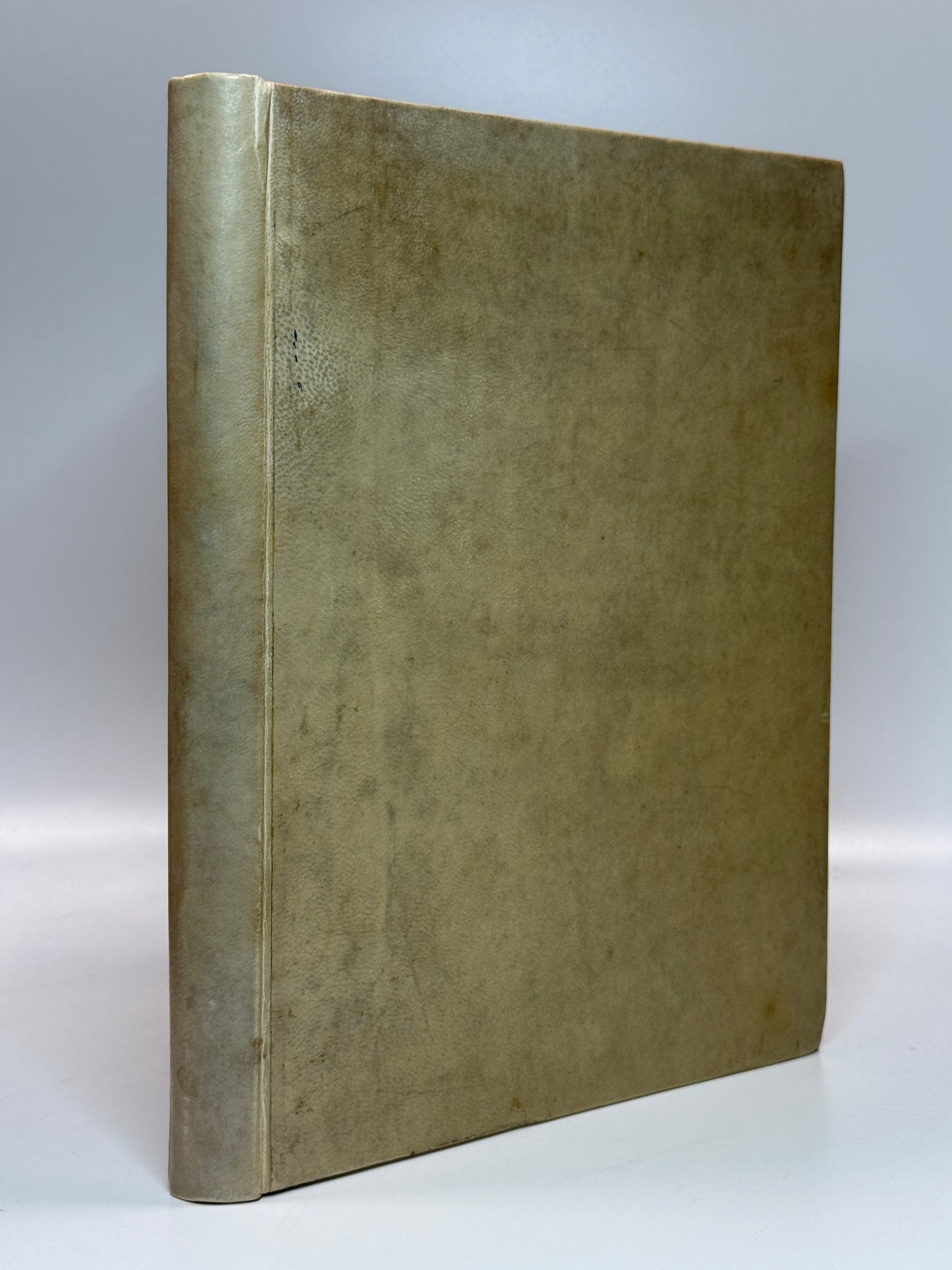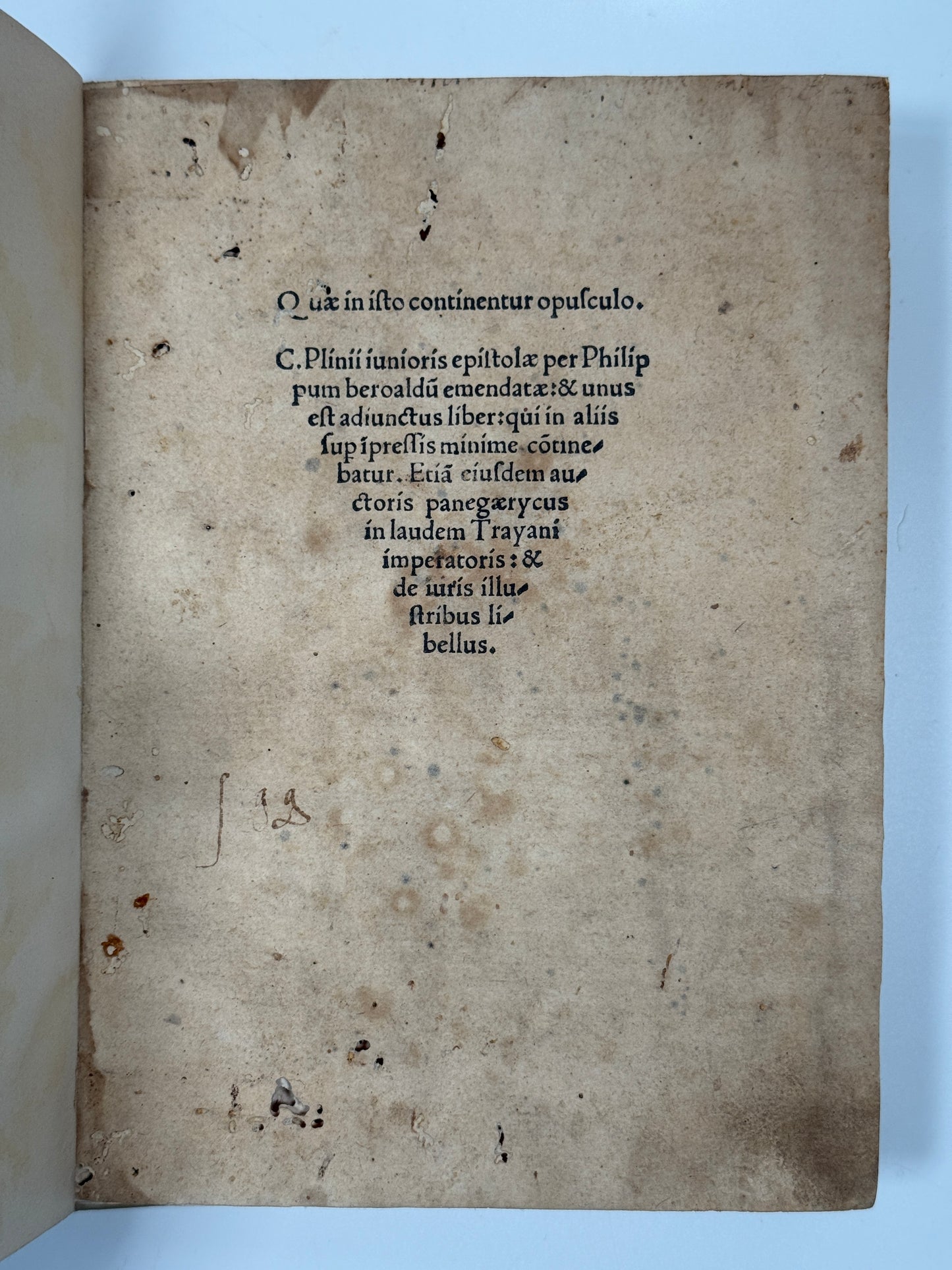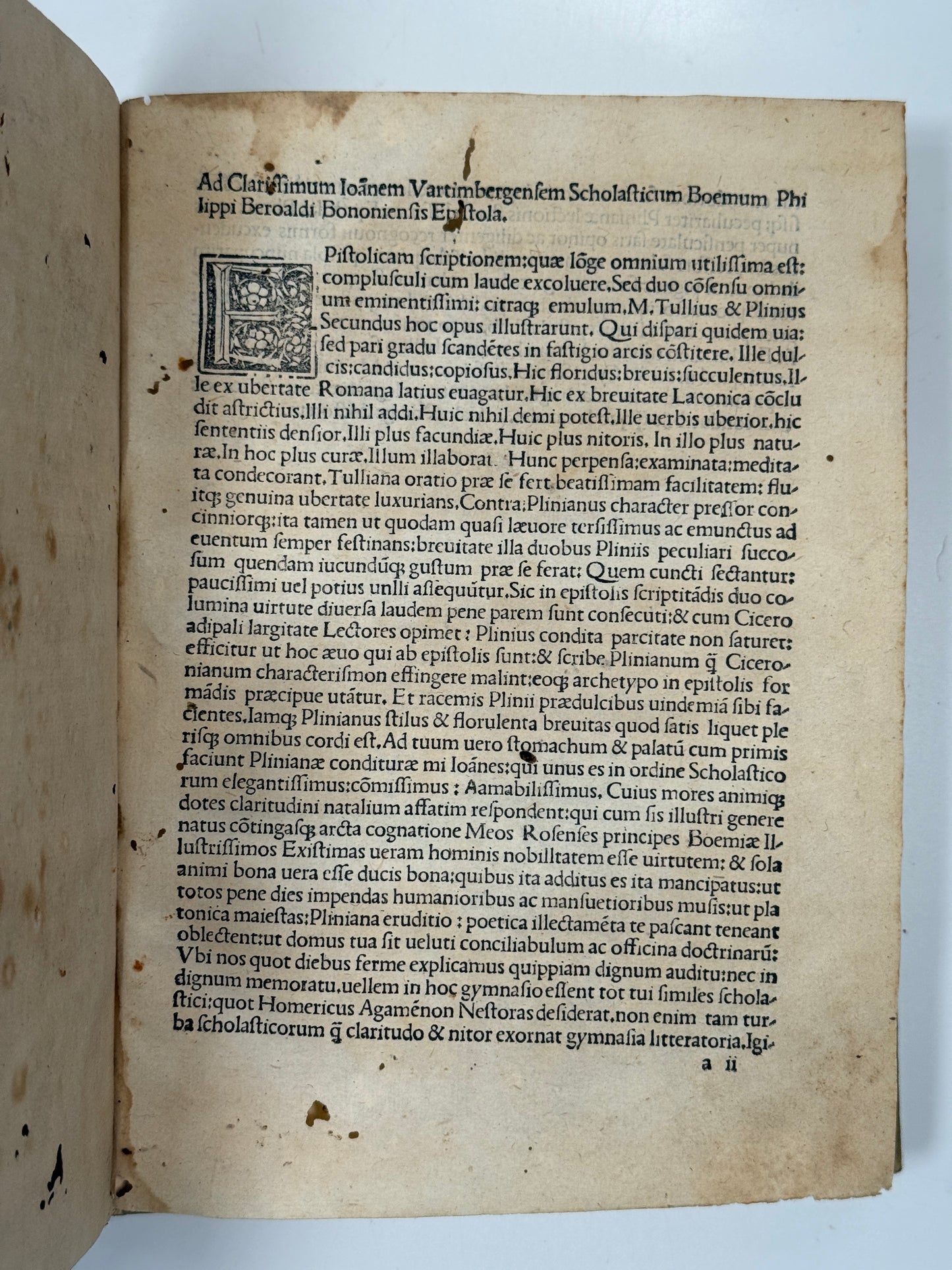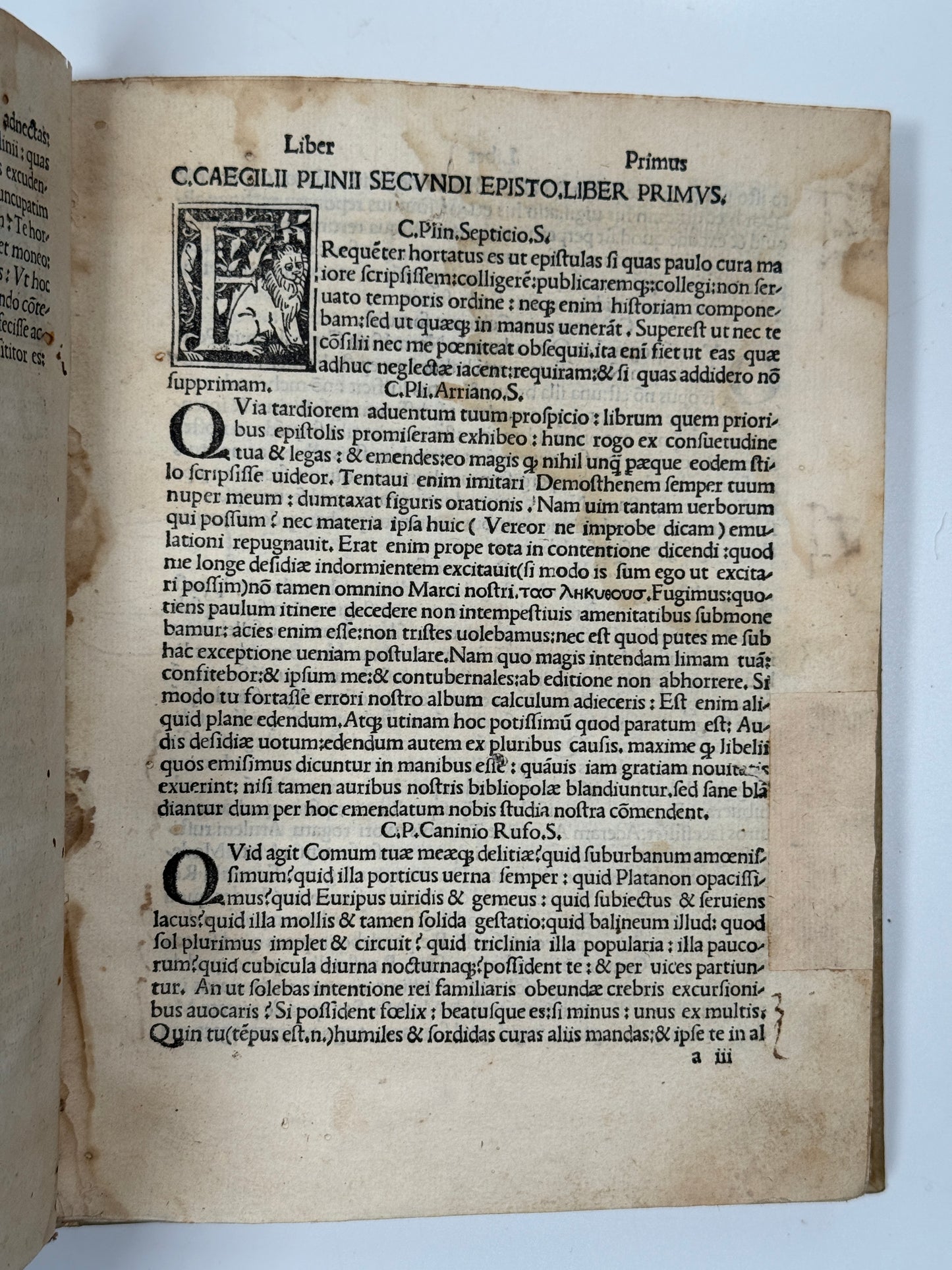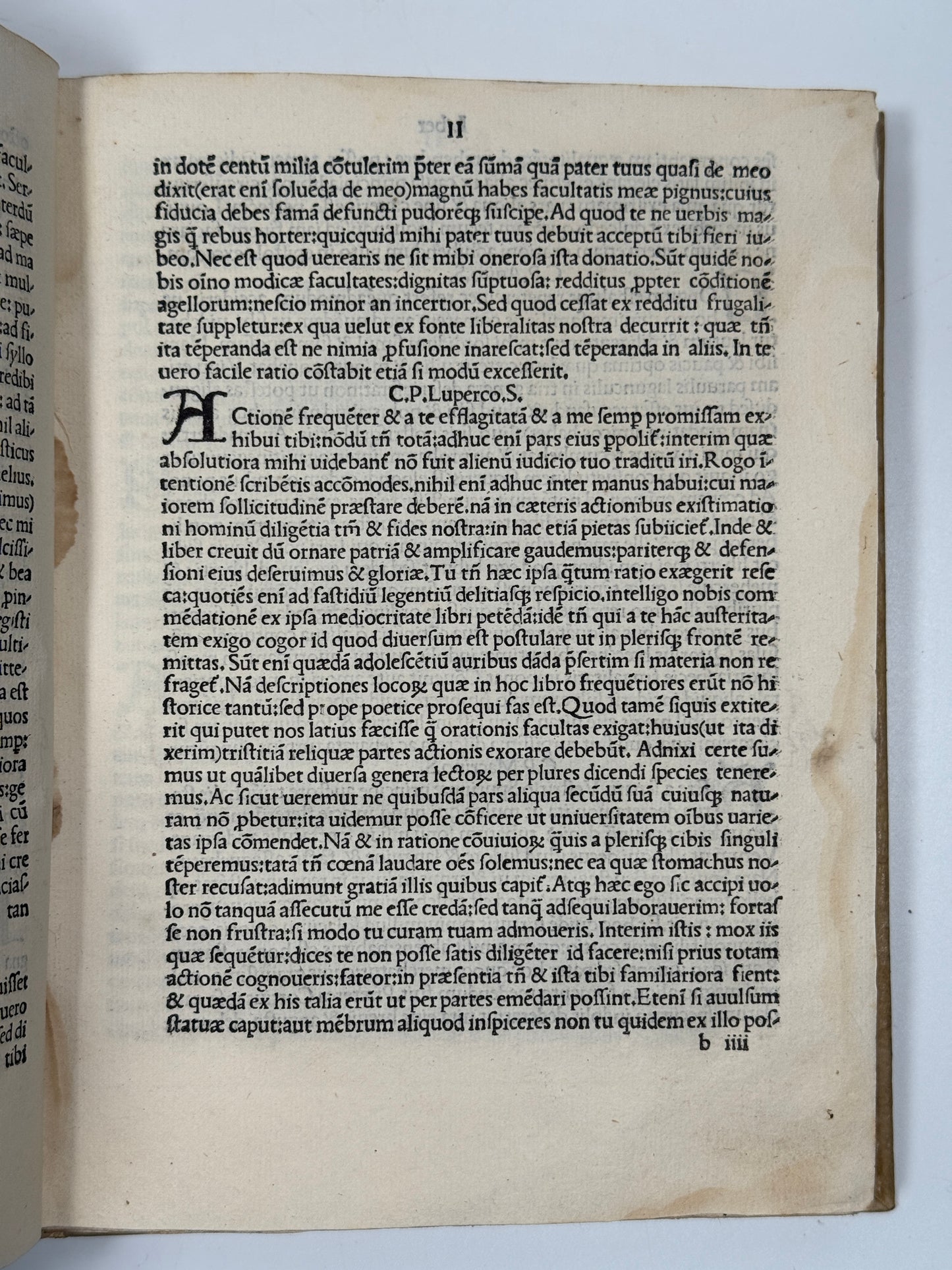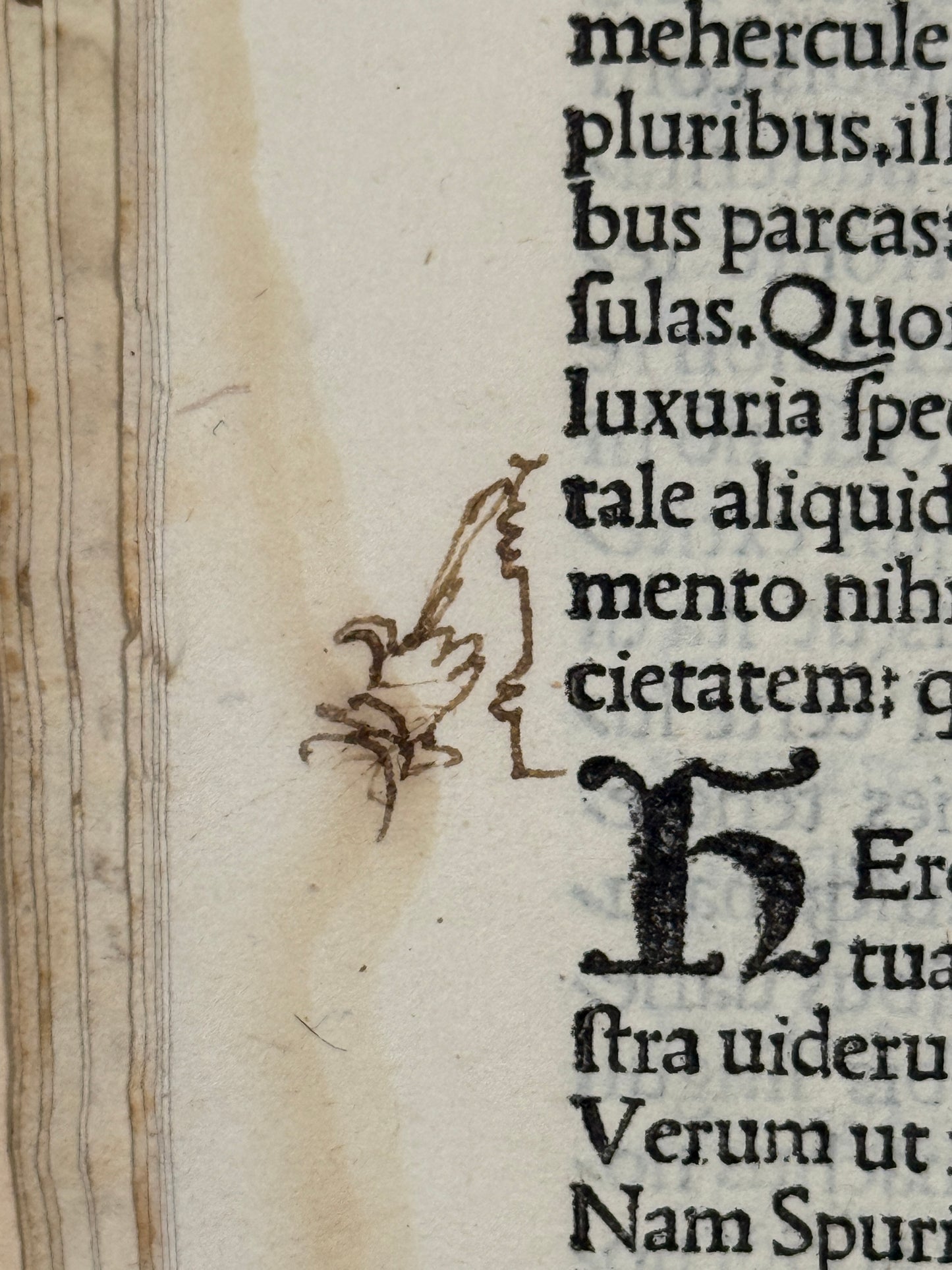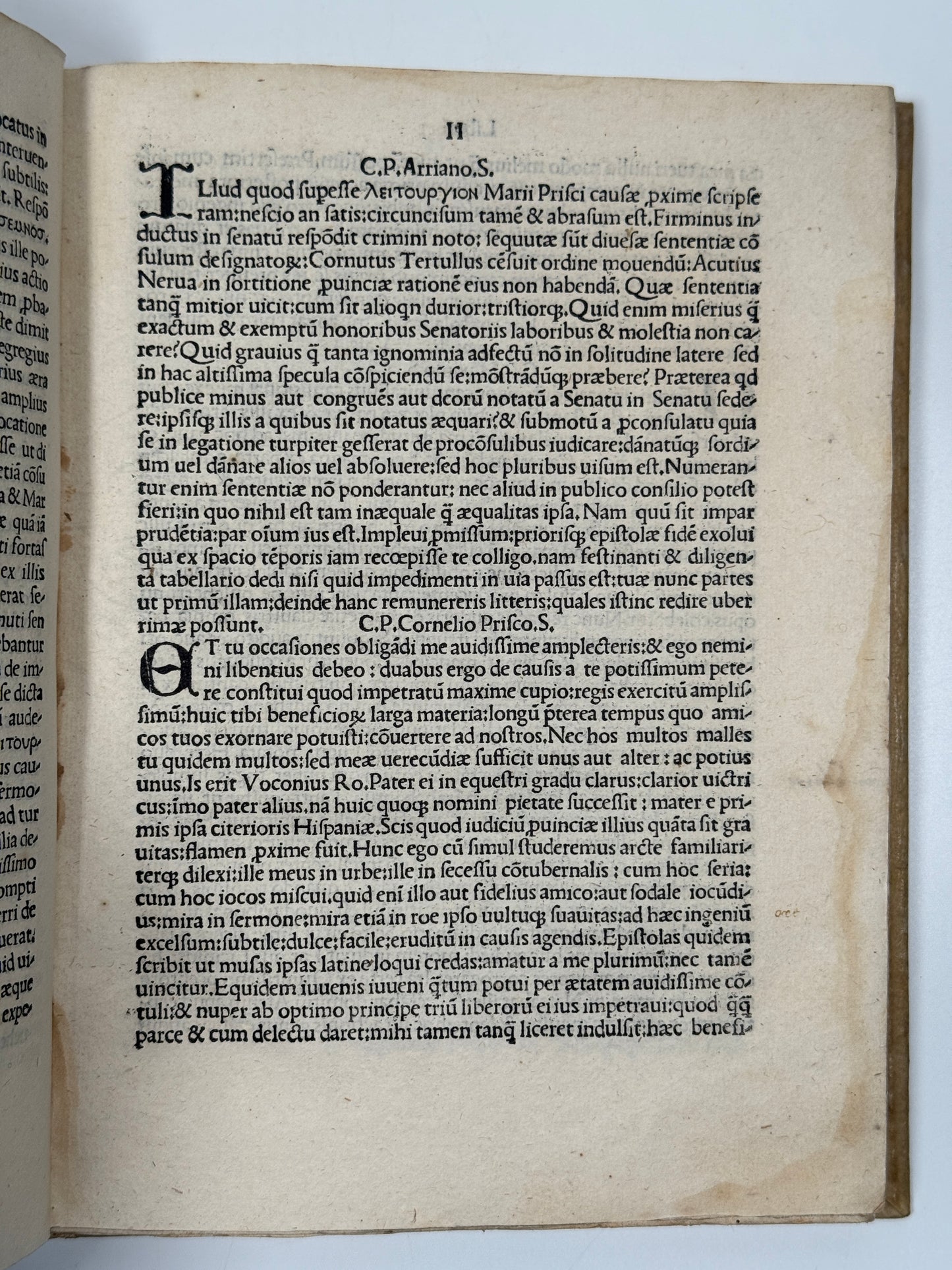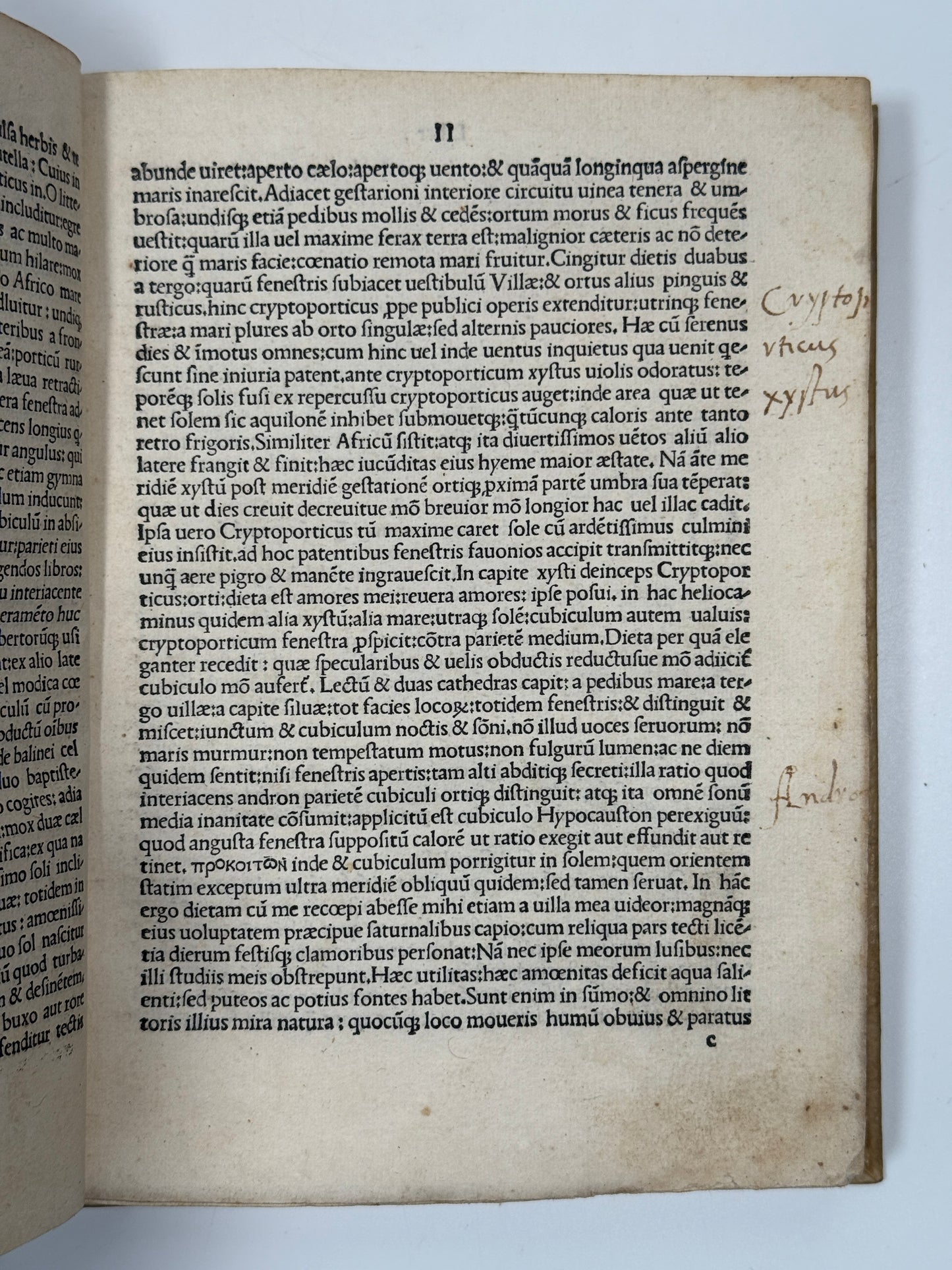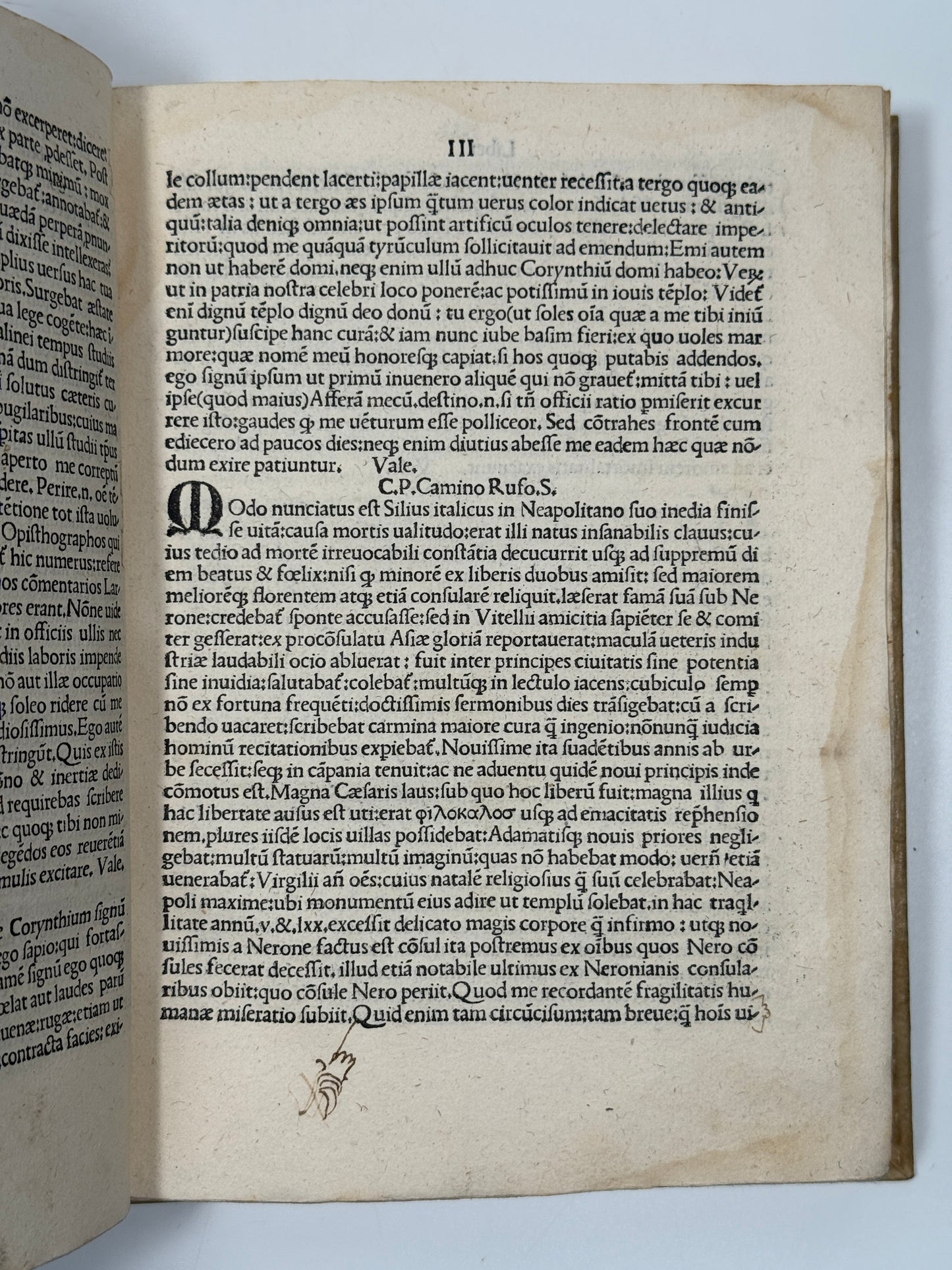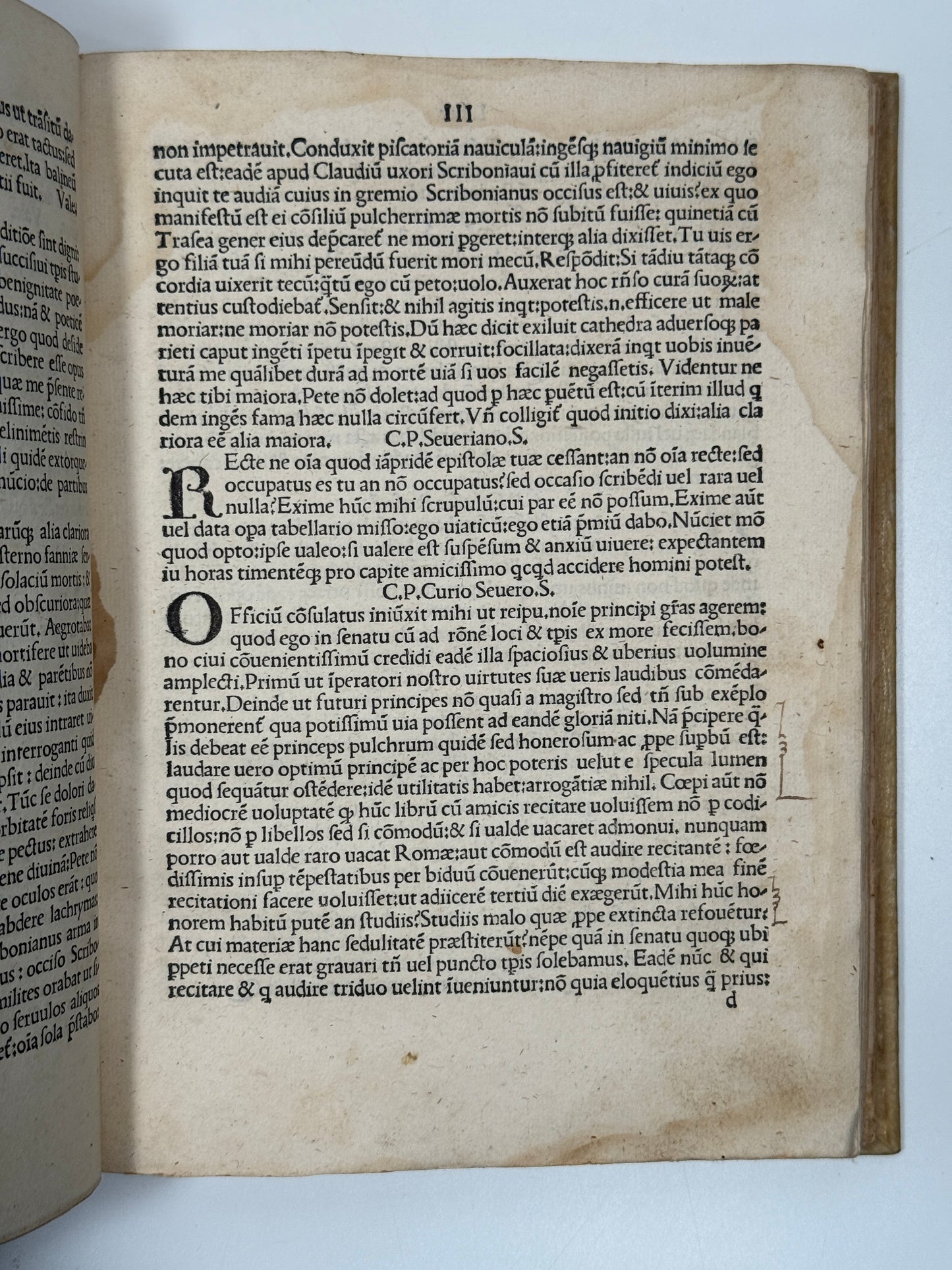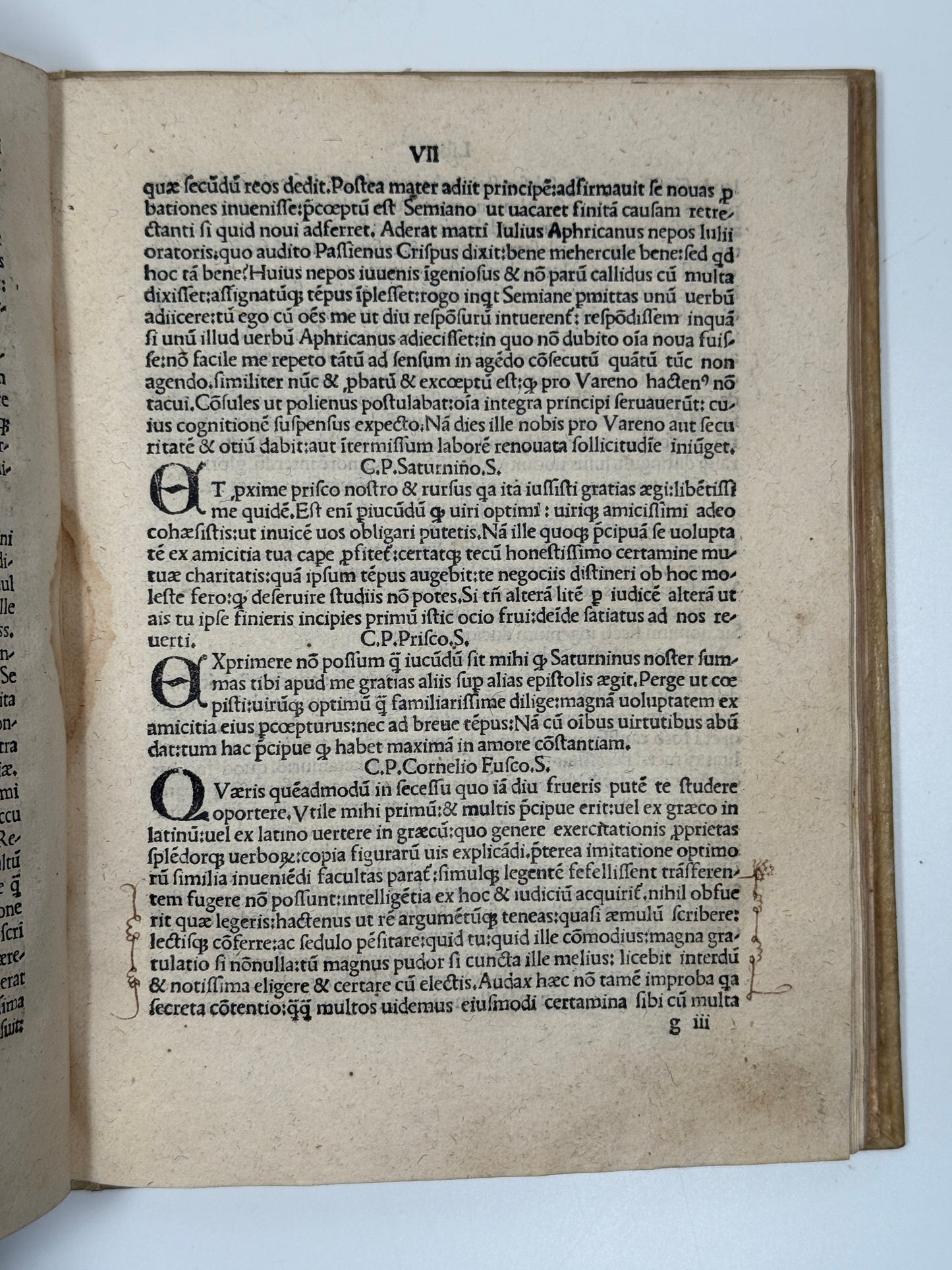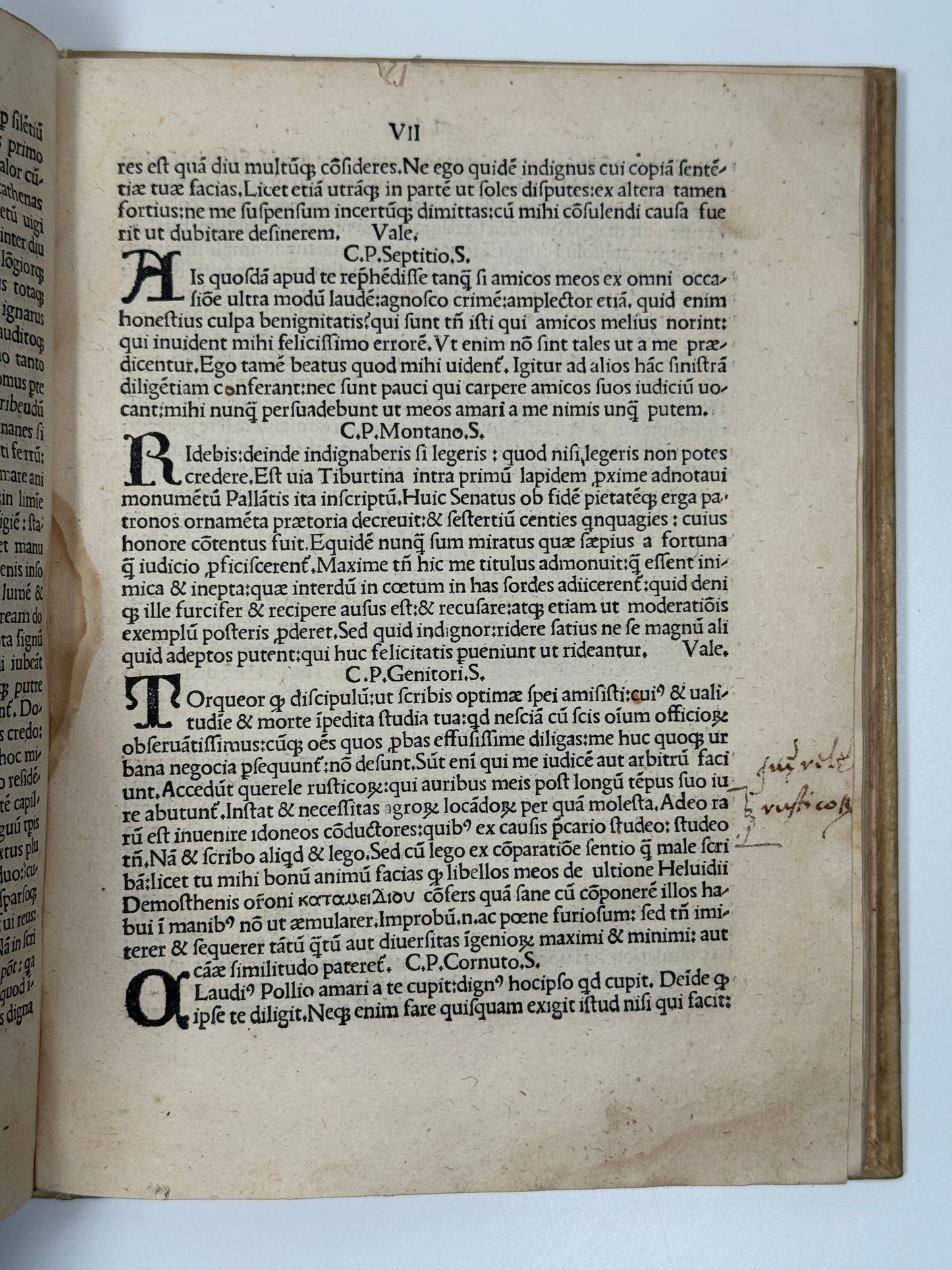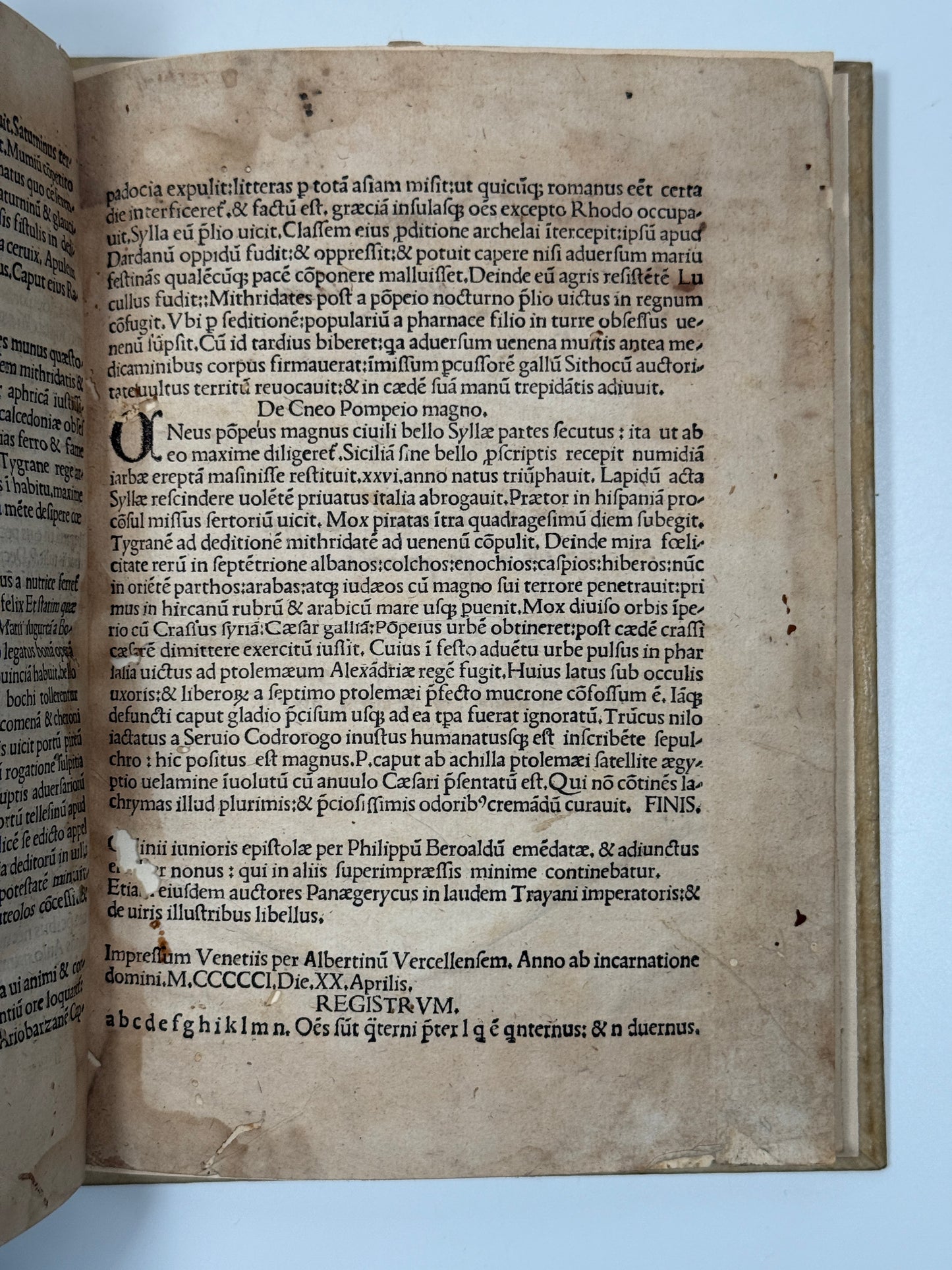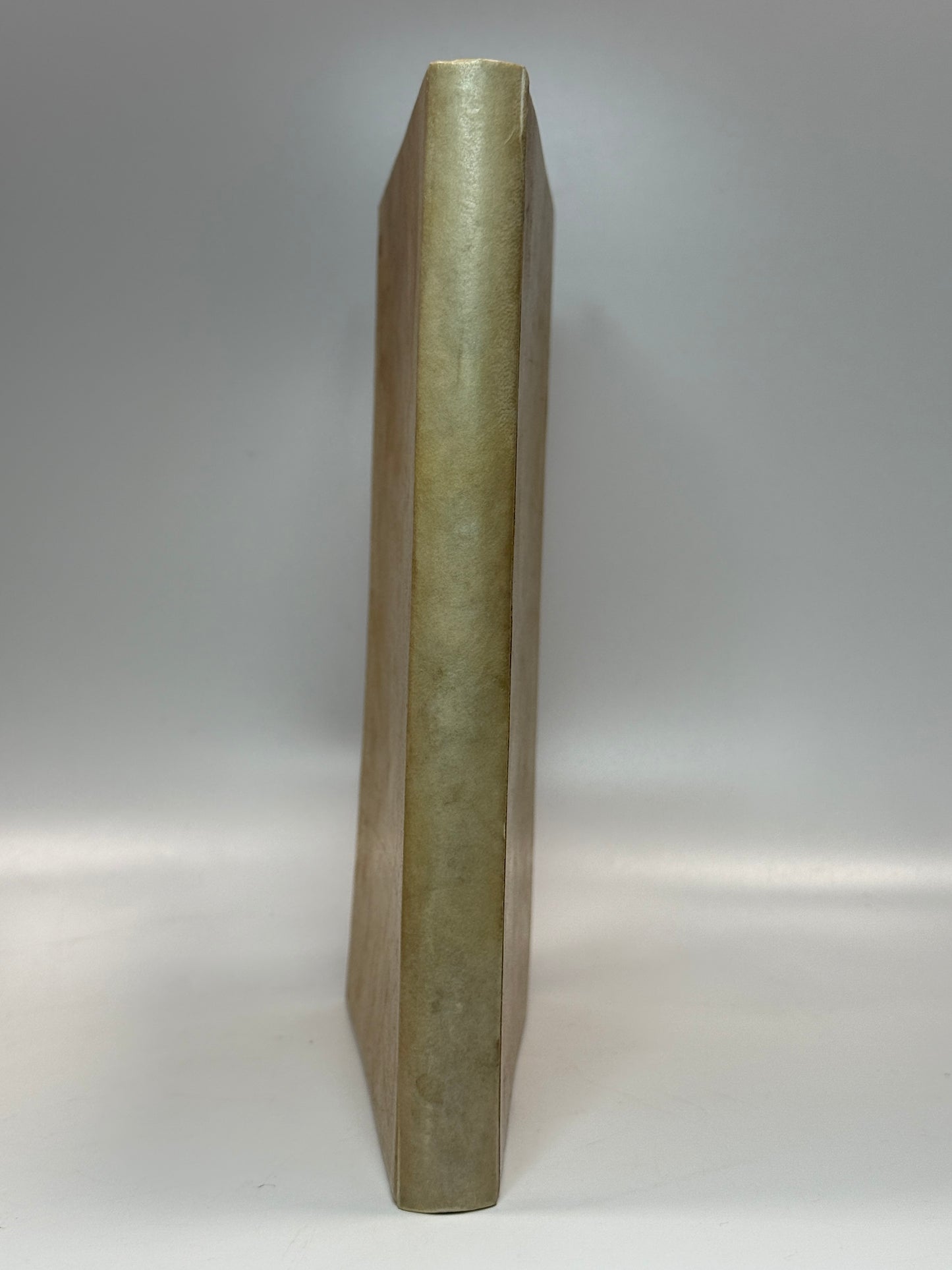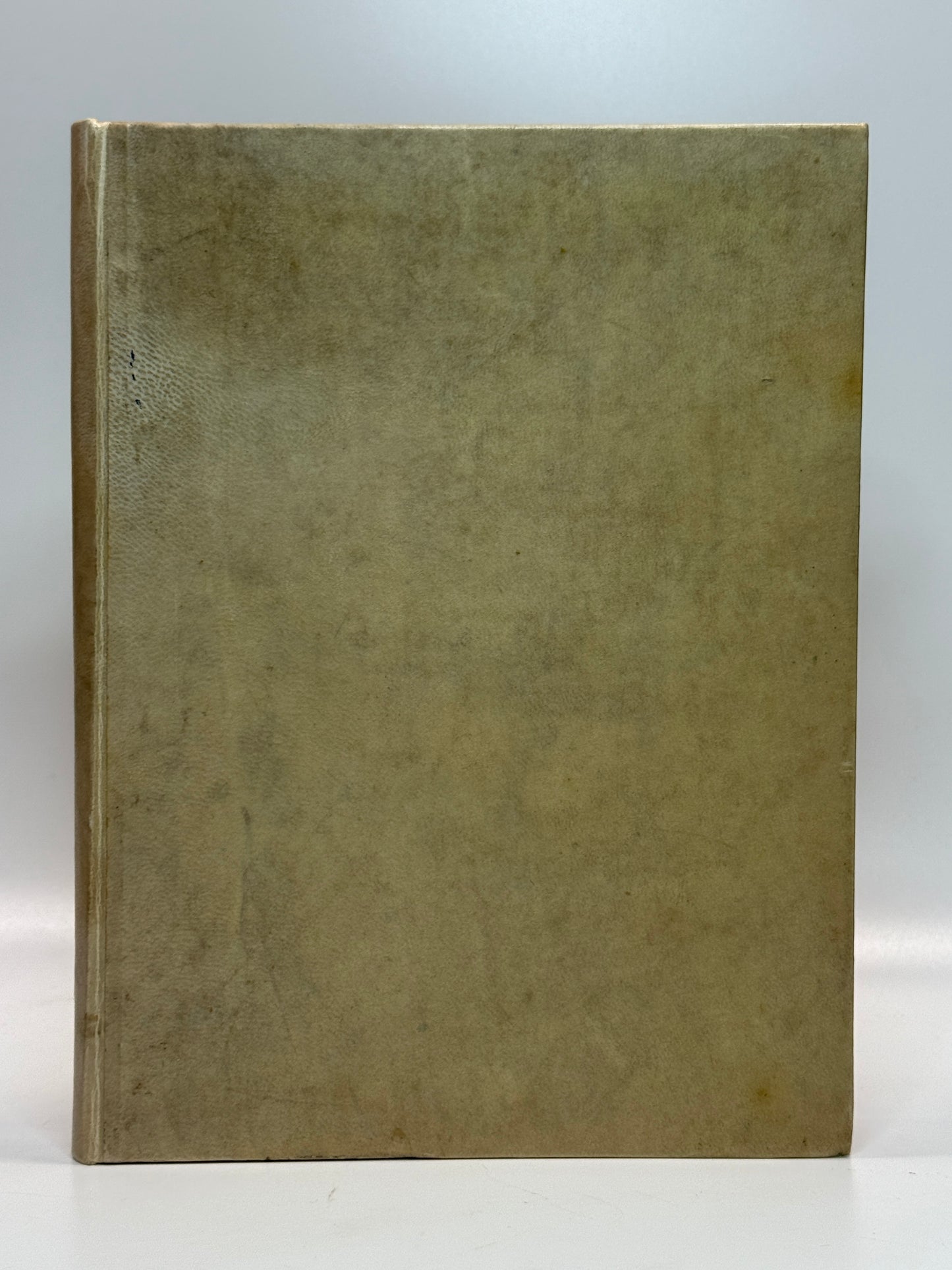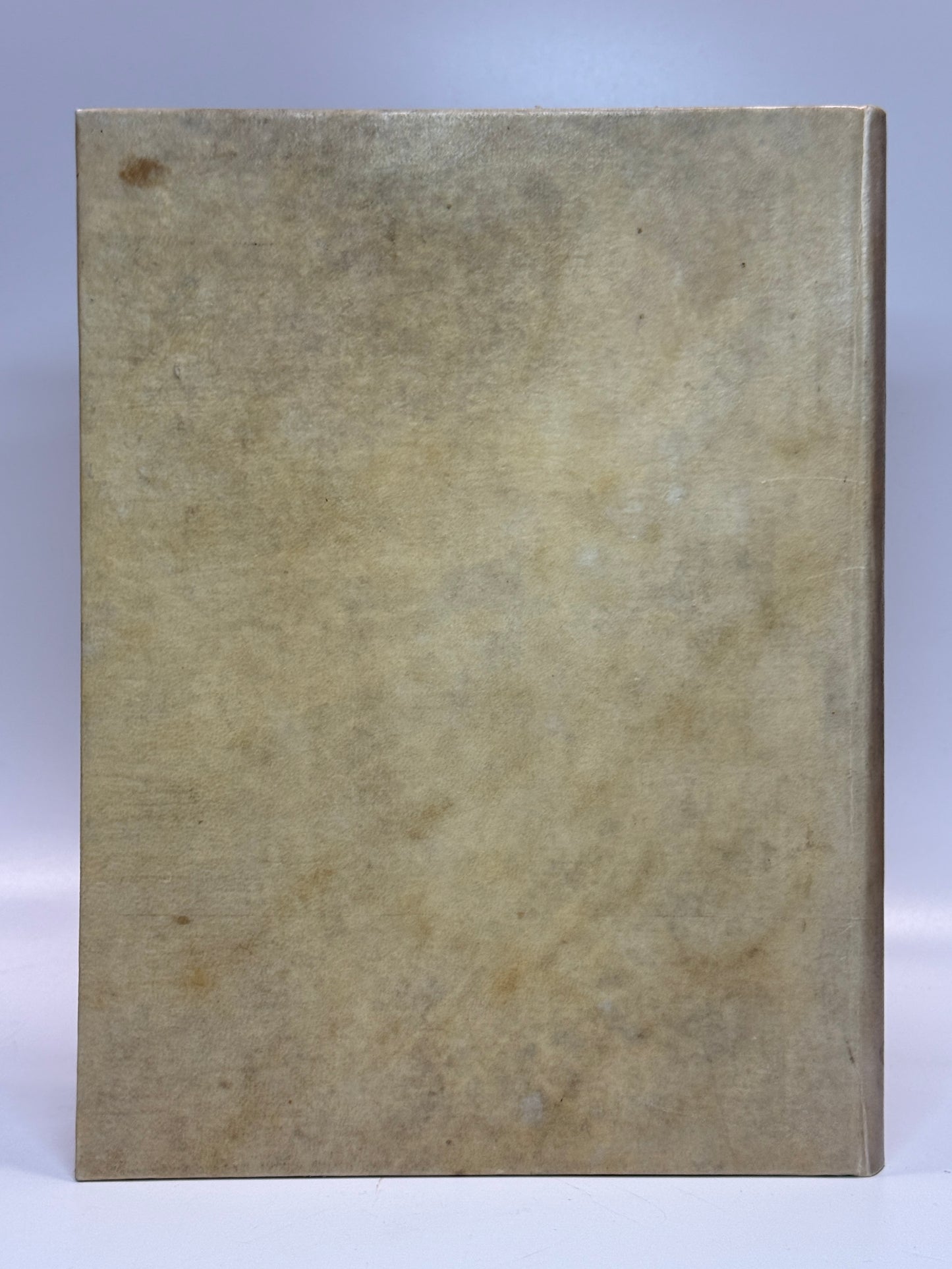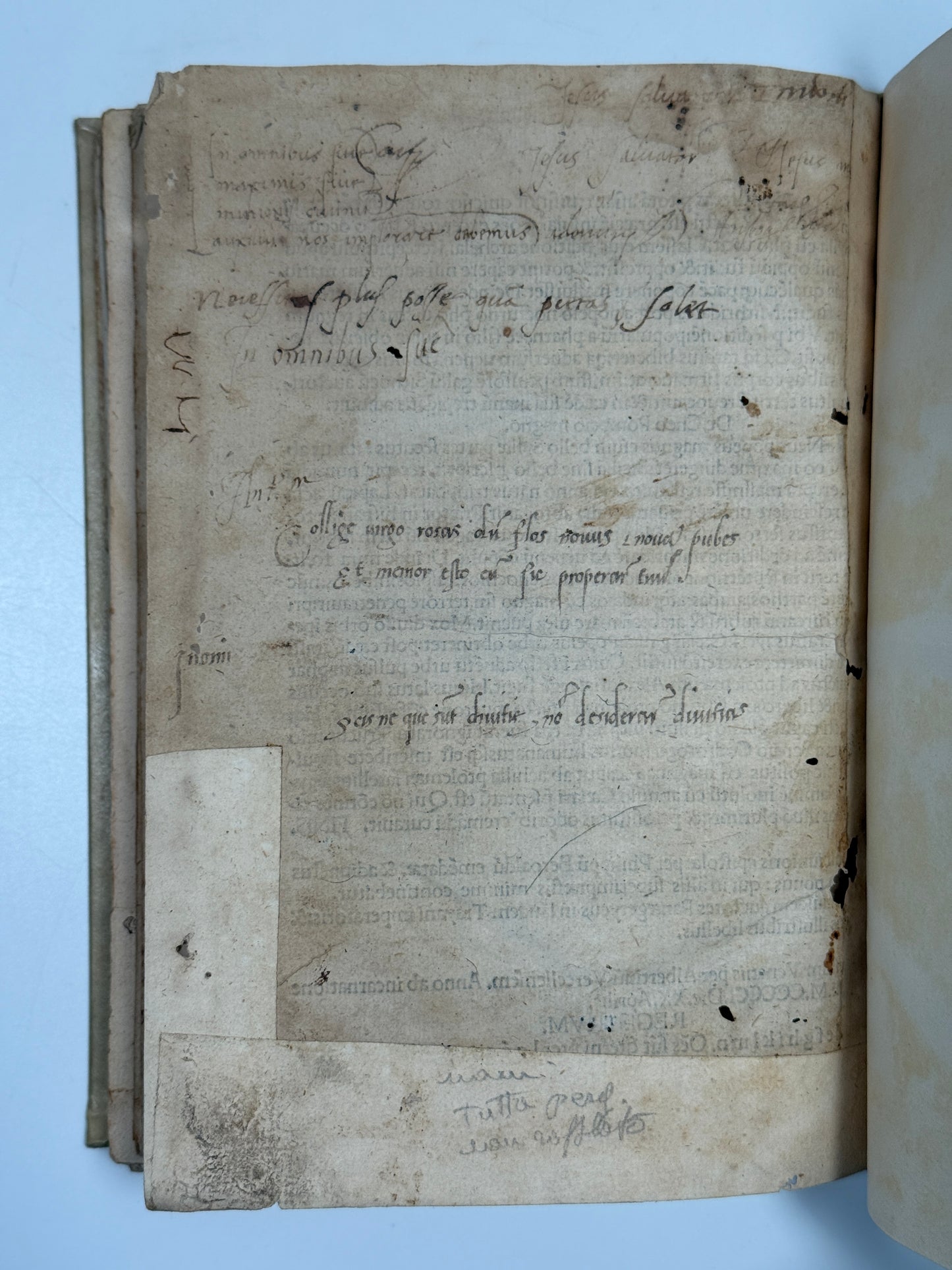1501 Letters of Pliny the Younger
1501 Letters of Pliny the Younger
Couldn't load pickup availability
Quae in isto continentur opusculo: C. Plinii iunioris epistolae per Philippum Beroaldum emendatae, et unus est adiunctus liber, qui in aliis suppressis minime continebatur. Item eiusdem auctoris panegyricus in laudem Traiani imperatoris, et de viris illustribus libellus. Impressum Venetiis per Albertinum Vercellensem, XX Aprilis MDCCCCCI.
The Letters of Pliny the Younger, corrected by Philippus Beroaldus, and one book added which was by no means included in other (previously) suppressed editions.
Also, by the same author, the Panegyric in praise of the Emperor Trajan, and the little book on illustrious men. Printed at Venice by Albertinus of Vercelli, on the 20th of April, 1501, 4to.
-------------------
FIRST EDITION of Pliny's Epistolae with the comments and additions by Filippo Beroaldo. This book also includes Pliny's Panegryicus and De viris illustribus urbis Romanae, the latter being a work of uncertain authorship but traditionally attributed to Pliny the Younger and thus is present here.
Pliny’s Epistulae comprise one of the most revealing bodies of Latin prose from the early Roman Empire, offering an unparalleled picture of public administration, private life, and literary culture under Trajan. Unlike the formal Panegyricus, the letters are written in a polished yet personal style that effectively inaugurated the Roman epistolarium as a literary genre, the letter intended for publication. Their subjects range from villa life and friendship to governance, literature, and natural phenomena, most famously the eyewitness accounts of the eruption of Vesuvius and the death of Pliny the Elder, and, importantly, the earliest extant official correspondence concerning the Christians.
The textual history of the Epistulae is notably complex. Two principal manuscript families transmitted the work: the nine book tradition, representing the letters Pliny himself prepared for circulation, and the ten book tradition, incorporating Book X, the official exchanges between Pliny and Trajan preserved in the imperial archives. The ninth century Fulda manuscript remains the chief witness for the nine book text, while the tenth book ultimately derives from a now fragmentary fifth century exemplar, portions of which survive today in the Morgan Library. This was the MS used by Aldus Manutius.
From these intertwined traditions emerged the early printed editions. The editio princeps appeared at Venice in 1471, containing only the nine books. The present 1501 edition, edited by the eminent humanist Philippus Beroaldus, reflects the continued humanist engagement with the text and includes the Panegyricus and De viris illustribus as companion works. Aldus Manutius would later issue the first complete ten book edition in 1508, based on the rediscovered fifth century manuscript.
-------------------
Of note is the fact that ISTC erroneously records the date of this imprint as 20 April 1500 as the only known extant copy which still had the colophon had been altered to change the date. Our copy, however, bears the original colophon which is something notably rare and of bibliographical significance among extant copies, showing the correct printing date of 1501, positioning this imprint right at the end of the incunable period and the very start of the early modern period.
-------------------
Size: 162 x 215 mm (approx.)
Condition:
[(1), a-k8, l10, m8, n4, (1)]
Collated as complete, without the original blanks, though these are not called for in the signatures. Rubricated in black throughout. Some marginal staining, principally to the rear of the text block, not affecting legibility of text. Small worm tracks in the blank margins of final leaves. Title leaf and final leaf laid down, a few other leaves with minor marginal restoration. Near contemporary marginalia throughout, contemporary writing to final leaf verso. Minimal trimming, well preserved with reasonably generous margins.
Later full vellum (c.1920?) and endpapers, a little discolouration, but attractive, without external identifying features. Both boards are securely attached and the binding is secure. No attached bookplates, but with evidence of something small having been removed from the rear pastedown.
[ISTC ip00812500].
